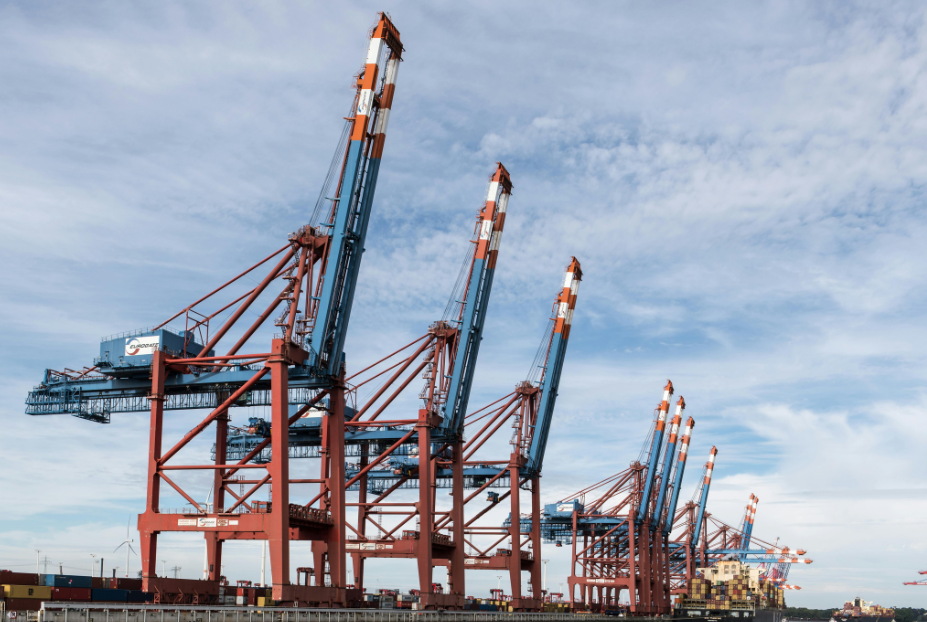Even in 2025, port congestion remains a formidable barrier to smooth global trade. Northern European terminals—including Rotterdam, Antwerp, Hamburg, and Bremerhaven—are facing their most sustained bottlenecks since the pandemic. Berth waiting times have risen dramatically: Antwerp is up 37%, Hamburg 49%, and Bremerhaven a staggering 77% between spring and early summer. What used to be measured in hours is now days—ships are waiting six to ten days to berth, particularly in Rotterdam, Singapore, and Cape Town. Meanwhile, barge waits of 66 to 77 hours persist at key hubs like Rotterdam and Antwerp, pushing dwell time into a prolonged crisis.
And these delays are not isolated to Northern Europe. Ports in Asia (e.g., Shanghai, Shenzhen), Africa (e.g., Cape Town), and the US (e.g., Los Angeles, New York) are seeing long anchorage queues and yard congestion, signaling truly global pressure on maritime capacity.
The Root of the Issue: Hand-offs, Complexity, and System Saturation
Port congestion isn’t just about berths being full. It stems from the inherent complexity of hand-offs: terminals, ships, rail, drayage, and inland barges must all align in an imperfect system. Labor shortages, shifting schedules due to alliance reorganizations, low water levels in riverine corridors, and lack of digital coordination all amplify each other.
A Better Way Forward: Sight and Agility, Together
The good news? This isn’t a challenge that requires backfilling every terminal or rewriting global port infrastructure. Many supply chains are finding relief through two strategic levers:
- Precise, Real-Time Maritime Visibility
Modern tools now offer more than vessel position—they deliver live berth and anchorage congestion data, barge queue insights, and dwell-time indicators. These early warnings give logistics teams a window to act before delays cascade.
- Flexible, Event-Driven Orchestration
The key is not just seeing the problem, but doing something useful with that knowledge. Agile execution platforms allow rapid rerouting, alternative port strategies, and automated notifications to affected downstream stakeholders—all without weeks of IT deployment or manual choreography.
By combining visibility with flexibility, companies can turn a disruption into a manageable variation, redirecting flows proactively rather than reacting in crisis mode.
A 2025 Case in Real Time
Imagine a shipment due for Rotterdam. Traffic alerts indicate rising queue times—say, six days at anchorage. A visibility system flags increasing berth stress. With a flexible digital orchestration engine, that alert triggers an alternate flow: reroute to Antwerp, shift barge pickup slots, adjust rail connections, and re-alert the warehouse team. All done within minutes. This isn’t hypothetical—it embodies how modern supply chains are beginning to regain control amid congestion.
Real-World Example: COMPO EXPERT’s Shift from Reaction to Prediction
For COMPO EXPERT, a central challenge was mounting detention and demurrage costs—expenses that quickly accumulate when containers remain idle too long. Together with Logward and Gatehouse Maritime, the company gained real-time visibility into port conditions and shipment status. Early warnings about congestion or delays allowed their teams to align trucking, warehousing, and delivery resources exactly when required.
“With real-time data and flexible orchestration, we were able to precisely align our transport flows. This not only helped us to avoid costs but also enabled us to provide more reliable delivery times to our customers.” says Frank Ostermann, Head of International Supply Chain at COMPO EXPERT. Most importantly, by shifting from a reactive stance to a predictive, orchestrated approach, COMPO EXPERT demonstrated how visibility and flexibility translate into both financial savings and operational resilience in today’s congestion-prone environment.

From Response to Resilience: What the Industry Needs Now
Port congestion isn’t going away — in fact, rising trade volatility and geopolitical tensions suggest it may become a structural feature of global logistics. But the playbook is increasingly clear: spot congestion early and respond dynamically. With real-time port insights and flexible execution tools, supply chains move from reacting in crisis to operating with built-in resilience. Capacity expansion takes time; intelligent adaptability is available right now.


